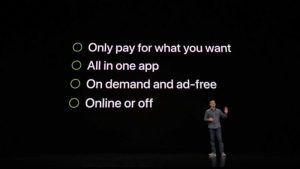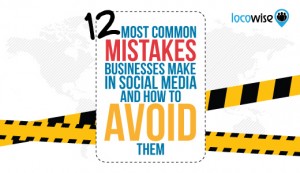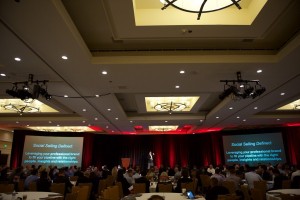 By Ryan Estis, Published November 2, 2014
By Ryan Estis, Published November 2, 2014
No matter what group or industry I’m working with, people want to better understand how to work more effectively across the different generations.
A few weeks ago, I shared my tips for selling to Gen Y buyers. But, beyond a sales shift, the workforce is changing fast. Millennials (anyone born roughly between 1980 and 2000) are taking over. By 2020, half of US workers will be millennials. (Read more about the demographics of our changing workforce in this study from UNC’s Kenan-Flagler Business School.)
Generation Y is challenging the status quo and forcing employers to change the way work works. A lot of those trends and changes are positive for employees across the generations. Leaders have an opportunity to learn from younger workers. Gen Y has a progressive perspective, and they’re coming to work ready to contribute and make a difference immediately.
So, what makes Gen Y employees different than their Gen X and baby boomer predecessors? Let’s consider how millennials look at work.
Millennials at Work
They’re the most engaged generation.
According to a fall 2013 Modern Survey study, millennials are the most engaged generation in the American workforce. I recently talked to Modern Survey President Don MacPherson about his latest research on millennials at work.
It’s easy to buy into stereotypes about Gen Y employees being lazy or unmotivated, but falling into that thinking doesn’t help anyone. Embrace Gen Y, help them discover and use their strengths, and be open to learning from them. You’ll probably end up gaining a lot and expanding your own perspective.
They value career development.
Modern Survey research also found millennial employees are much more motivated by career development than security-seeking baby boomers. A third of employed millennials are actively looking for a job and, on average, are projected to stay with an employer only about two years. Millennials are bringing an unprecedented perspective on career mobility to the workplace.
As a result, organizations will need to rethink their retention and development strategies. If you want to retain high potentials, you’ll need to help them grow and learn. Millennial employees who feel stifled or under-used will look elsewhere, fast. Can you blame them?
They value flexibility and open-mindedness.
The 9-to-5 mentality is dead. Does work really need to be done in an office? Generation Y is looking for a more flexible work environment that rewards work done well, without strict rules about when and where it gets done.
For managers who got their experience in a culture where being at your desk on time was important, this might be a tough change to swallow. Chad Estis leads the sales organization at the Dallas Cowboys. He used to enforce a very structured work day. Now, as a result of changing employee expectations, he’s dropped the requirements and doesn’t worry about when sales reps are at their desks as long as they’re meeting their goals.
The results? “There hasn’t been an iota of drop-off in production. And, people’s enjoyment of their jobs has gone way up,” he says. “I never would have thought about making this kind of change 10 or 15 years ago, but it’s been a net positive all around.”
They prefer feedback every day over an annual review.
Most thought leaders in the employee engagement space agree: The days of the annual employee review are numbered. Millennials are looking for regular, consistent feedback from their managers. Giving honest feedback on a regular basis may fall outside of some managers’ comfort zones, but the result is a better-equipped and more confident workforce.
Estis has built trust with his team by giving employees honest feedback. “If we say we’re committed to helping our people, we have to give them constructive feedback. Otherwise, we’re doing them a disservice.”
In a world that is constantly changing, more frequent feedback is good for everyone. At Adobe, Senior Vice President of Human Resources Donna Morris saw that annual performance reviews weren’t resulting in improved business goals; they actually were hurting the company. Because employees only heard feedback from their managers once a year, there was often a negative “hangover” after the review period. So, Adobe dumped the formal annual review and started encouraging people to set expectations for every year, get feedback on a regular basis, and create a plan for growth and development. The results: lower voluntary attrition and happier employees.
They’re digital natives.
Millennials are digital natives. Saying that Gen Y is comfortable with technology is an understatement. They use technology to learn new skills, collaborate with coworkers and communicate with customers. They expect you to be digitally savvy, too.
Progressive leaders recognize millennials’ preference for technology, and they’re changing the way they approach training and development. At Grainger, sales leader Brian Norris found “old-school classroom training” just wasn’t working for the company’s younger sales force. So, his team leverages new media, like podcasts and videos via mobile learning applications, and takes advantage of social media.
They’re lifelong students.
Today, career development opportunities are the number one driver of employee engagement. The bottom line: People want to work for a company that continues to invest in them and supports continuous learning.
Aaron Williams, a sales leader who has led teams at major technology companies including HP, feels encouraged by the youngest employees and students he’s meeting today. He’s meeting lifelong students. “In the past, going into sales was a Plan B,” he says. “Most people got a degree in something else. The college students I’m meeting now decided a year or two ago that they’re going into sales. They’re studying it the same way chemistry majors study chemistry. They’re pursuing it with purpose.”
Once they’re on the job, Gen Y employees keep looking for opportunities to learn, grow, and become more informed. Organizations that encourage an environment of continuous learning (for employees of every generation) will come out on top.
Millennial employees are engaged, comfortable with technology, and have a strong desire to learn, grow and contribute. Exactly what we need.
Business Articles | Business 2 Community
(389)









